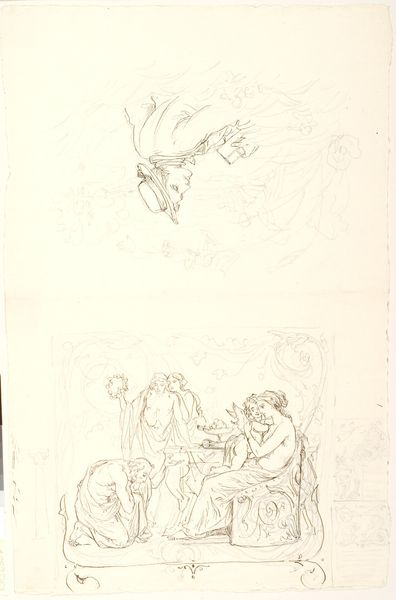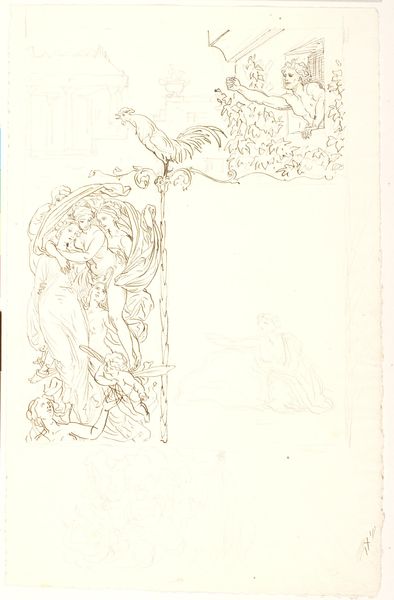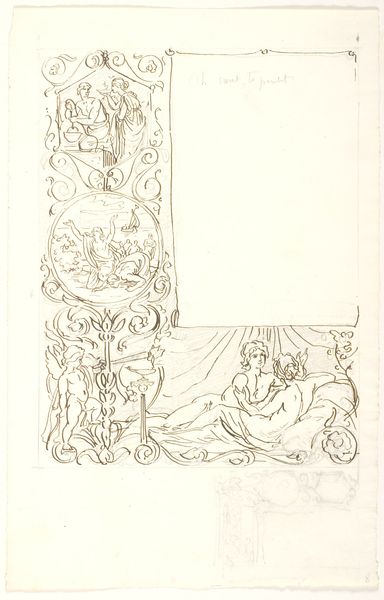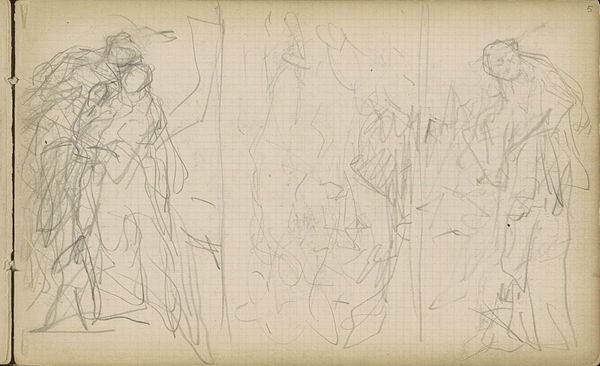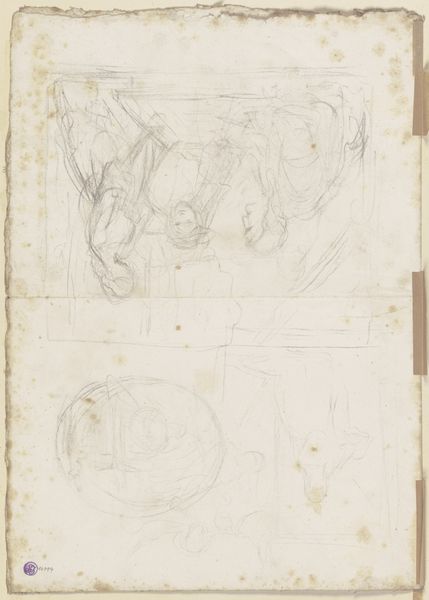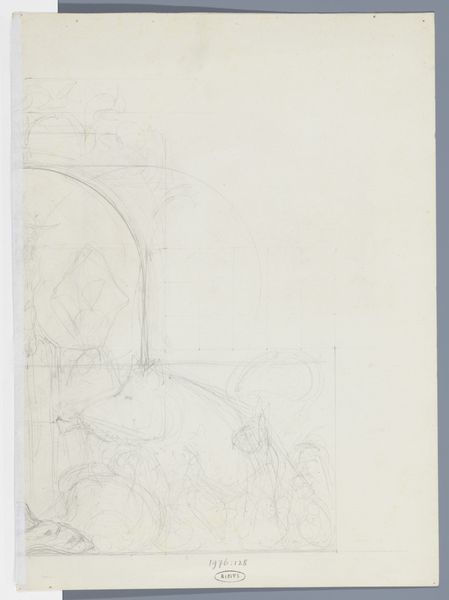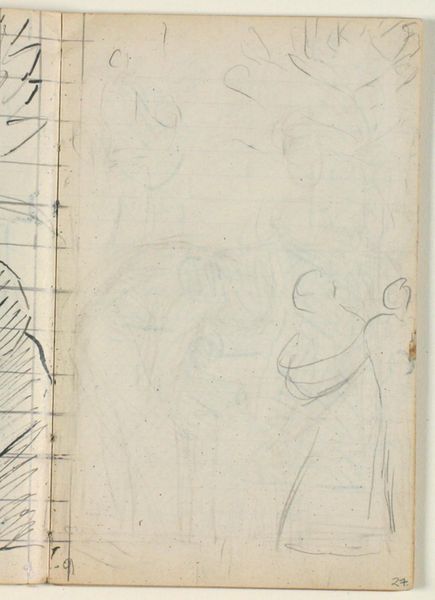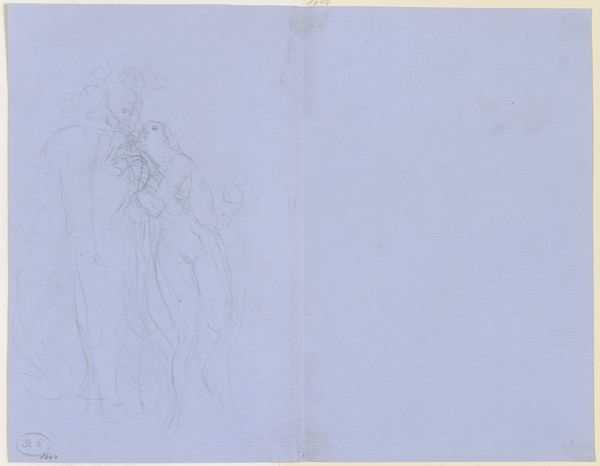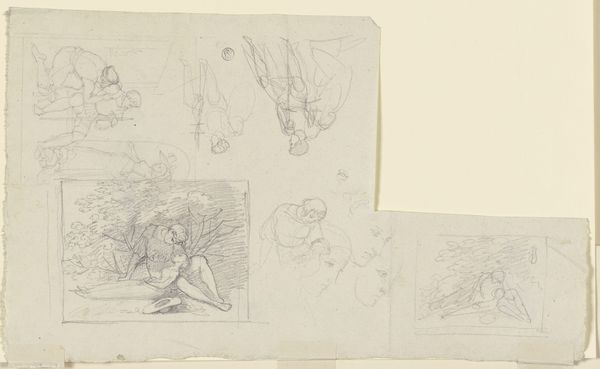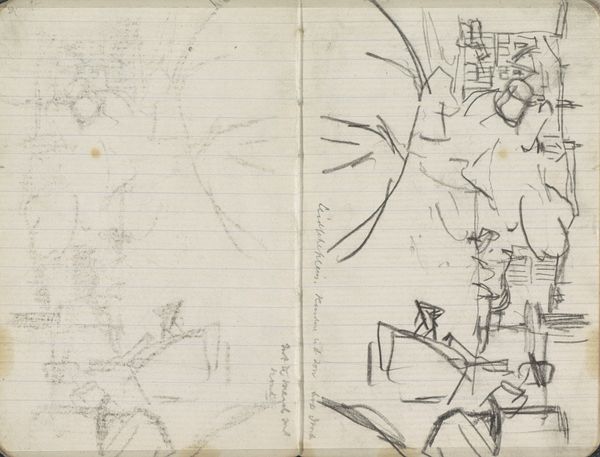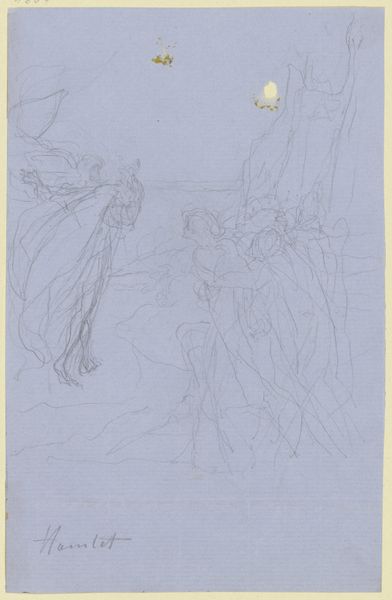
Skitser. F.o. bl.a. ungt par hvilende på leje, vignetterne med den sovende kvinde og det elskende par. F.n.: Den sovende kvinde og det elskene par 1860
0:00
0:00
drawing, ink, pen
#
drawing
#
figuration
#
ink
#
pen
#
academic-art
Dimensions: 366 mm (height) x 233 mm (width) (bladmaal)
Curator: Let’s talk about Lorenz Frølich’s “Skitser,” created around 1860. It's a captivating page filled with pen and ink sketches, housed right here at the SMK. What strikes you first about it? Editor: The immediacy, actually. The ink hasn't quite decided where to go yet, like life at that stage, everything's sketched out in the possibility of a moment. The artist is capturing intimate glimpses of repose and connection; the figures almost feel unfinished, still forming their identities. Curator: Exactly! There's an ethereal quality to it, a lightness that comes from the delicate lines. I sense Frølich exploring the themes of love and slumber through these vignettes. You get a strong academic-art feel to it with a figuration, though that is in progress.. What do you think? Is there a conversation here about the ideals of romance of the time? Editor: Perhaps, though I see more a discussion about how artists utilized these raw materials available at the time to cultivate and define a common visual language that extended well beyond just the “ideals of romance”. The ink, the paper, the artist's labor…these were commodities shaping how art was made and disseminated. Each tiny mark represents access and the social implications thereof, defining that period and how its romance becomes this idea that is only in reach of specific societal standings. Curator: An interesting point indeed! Focusing on material access and its social ramifications shines a different light on the work, framing it as a commodity rather than simply creative expression. Still, there is an almost nostalgic feel, as we're peeking into intimate spaces. These people have been asleep for decades in sketchbooks. Does that give you an odd feeling, a hint of timelessness? Editor: Definitely, that material persistency is part of the charm. But I wonder about the physical circumstances of its creation. Who sourced the materials? What studio practices allowed for such detail, albeit incomplete? Even those empty spaces carry the trace of economic choices, reflecting on societal implications beyond love and romance. Curator: Absolutely, you’ve given me new eyes to look through! Editor: And you made me feel as if these characters are as real as one's memory; how lovely.
Comments
No comments
Be the first to comment and join the conversation on the ultimate creative platform.
